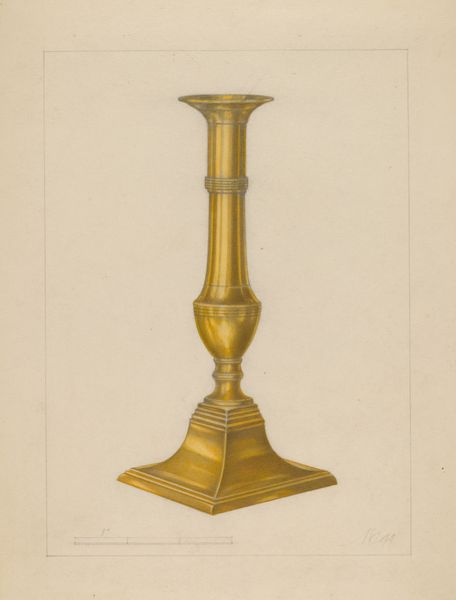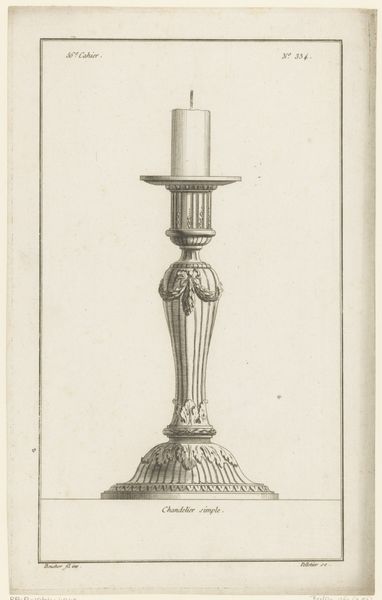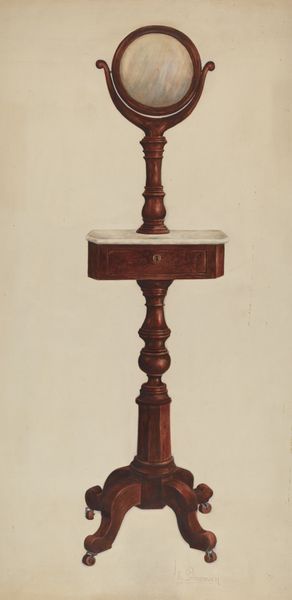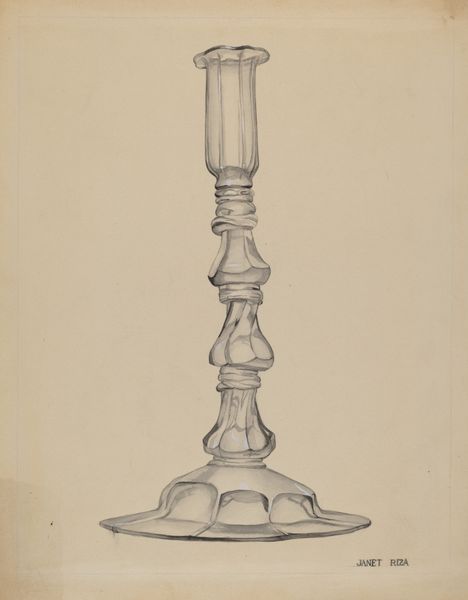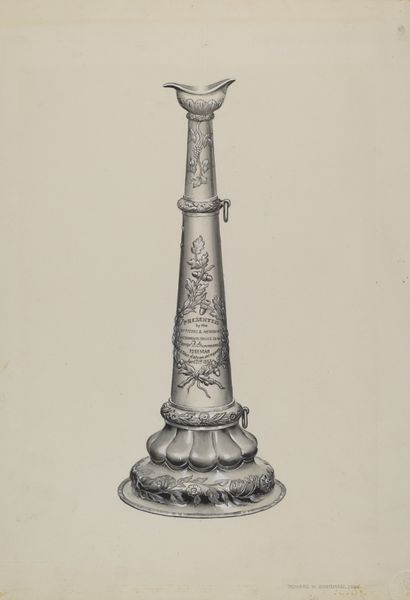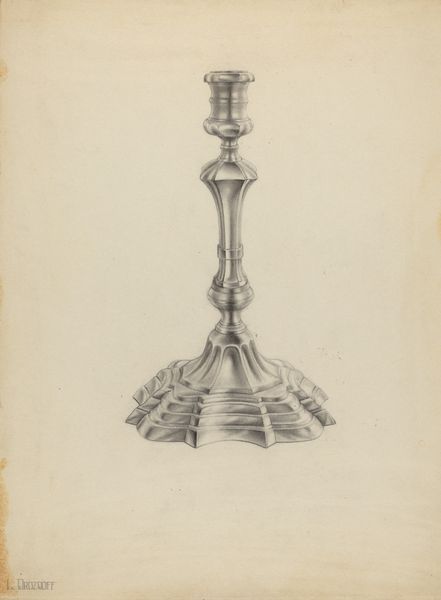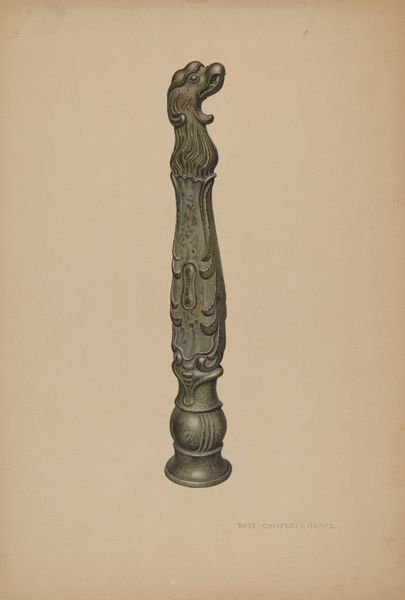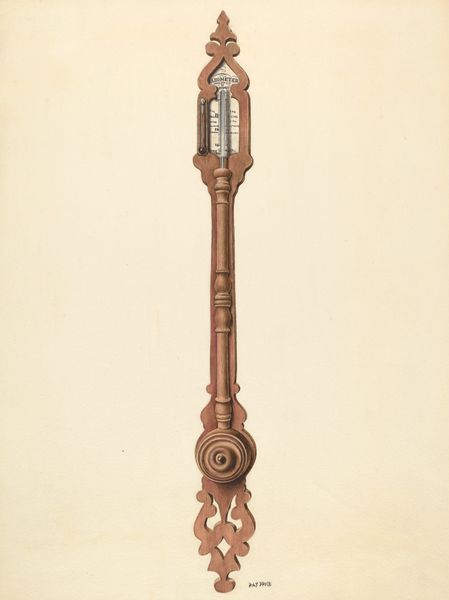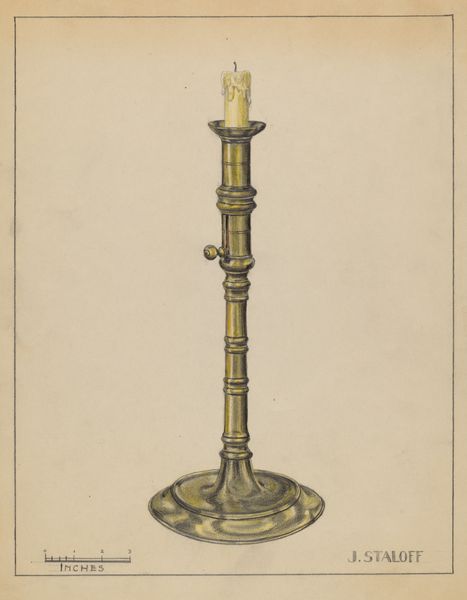
drawing, coloured-pencil, pencil
#
drawing
#
coloured-pencil
#
coloured pencil
#
pencil
Dimensions: overall: 29.4 x 14.2 cm (11 9/16 x 5 9/16 in.) Original IAD Object: 6 1/2" high
Copyright: National Gallery of Art: CC0 1.0
Editor: This is Horace Reina’s "Silver Candlestick," drawn around 1936, using coloured pencil. There's something both elegant and a bit melancholic about it. What draws your eye when you look at this piece? Curator: The candlestick, a symbol often tied to rituals and illumination, is rendered here with a certain austerity. Consider the era – 1936. The world was on the cusp of immense upheaval, shadowed by economic hardship and rising fascism. Doesn’t the muted palette, the almost hesitant lines, suggest a world where even light feels precarious? Editor: I hadn't thought about the historical context so directly. I was just thinking about the play of light on the silver. Curator: But the "play of light" itself becomes a loaded concept, doesn't it? Is it a defiant glimmer of hope against encroaching darkness, or merely a reflection of a society clinging to dwindling resources? The domestic object, elevated through artistic representation, also mirrors social strata, reflecting wealth disparities inherent during the depression. Editor: So you're seeing this candlestick as not just a pretty object, but almost a commentary on the times? Curator: Precisely. Consider how art of this period often serves as both document and critique, questioning established norms and reflecting collective anxieties. Do you see a certain stillness in the object, possibly representing those people standing still because of economic conditions? Editor: Yes, now that you mention it, there's definitely a sense of quiet… almost resignation. I see what you mean. It is about more than light and shadow. Curator: And that’s the beauty of art history—understanding how socio-political landscapes are inextricably woven into the artistic process. Looking beyond the object, what do we really see when we confront historical and contemporary parallels within such artistic choices? Editor: This makes me think about how we can view everyday items, not just "fine art," through a critical lens. Everything has a story. Curator: Exactly. Art challenges us to actively see and continuously ask: who is represented, who is excluded, and what narratives are being perpetuated?
Comments
No comments
Be the first to comment and join the conversation on the ultimate creative platform.

